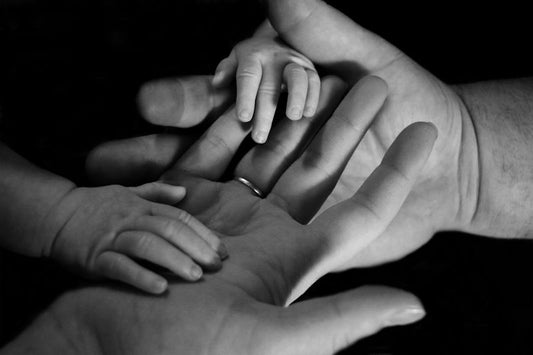Breast milk is often referred to as "liquid gold" for its many health benefits for babies. However, it's essential to know how long breast milk can stay out after pumping. Leaving breast milk at room temperature for too long can cause it to spoil, making it unsafe for babies to consume.
According to Healthline, freshly expressed breast milk can be kept at room temperature for up to six hours. However, it's best to use or properly store the breast milk within four hours, especially if the room is warm. If the milk has been previously frozen, once thawed, it can sit out at room temperature for one to two hours.
Proper storage and handling of breast milk are crucial to ensure that it remains safe and healthy for babies to consume. In this article, we will explore the guidelines for storing and handling breast milk, including how long it can stay out after pumping.
Basics of Breast Milk Storage
Breast milk is a valuable source of nutrition for infants, providing them with essential nutrients and antibodies that help protect them against infections and diseases. Proper storage of breast milk is crucial to ensure that it remains safe and nutritious for the baby to consume. In this section, we will discuss the basics of breast milk storage, including understanding breast milk composition and choosing the right storage containers.
Understanding Breast Milk Composition
Breast milk contains a variety of nutrients, including carbohydrates, proteins, fats, vitamins, and minerals. It also contains antibodies and other immune-boosting factors that help protect the baby against infections and diseases. The composition of breast milk can vary depending on factors such as the mother's diet and the baby's age and health status.
Choosing the Right Storage Containers
When it comes to storing breast milk, choosing the right container is important to ensure that the milk remains safe and nutritious for the baby. Glass and hard plastic containers are good options for storing breast milk, as they are less likely to leach harmful chemicals into the milk. BPA-free plastic bottles are also a safe option for storing breast milk.
It is important to use a storage container with a tight-fitting lid to prevent contamination and to label the container with the date the milk was expressed. Freshly expressed breast milk can be stored at room temperature for up to four hours, in the refrigerator for up to four days, and in the freezer for up to six months. It is important to follow these guidelines to ensure that the milk remains safe and nutritious for the baby to consume.
Guidelines for Breast Milk Storage
Breast milk is a valuable source of nutrition for infants and should be stored properly to maintain its quality and safety. Here are some guidelines for storing breast milk:
Room Temperature Storage
Freshly expressed breast milk can be stored at room temperature (77°F or colder) for up to 4 hours, according to the CDC. It is important to note that the optimal time for using or storing the breast milk is within 4 hours, especially if the room is warm.
Refrigerator Storage
Breast milk can be stored in the refrigerator for up to 4 days, according to the CDC. It is best to store the milk in the back of the refrigerator, where the temperature is most constant. When storing fresh breast milk, it is important to follow the storage guidelines for healthy, full-term babies.
Freezer Storage
Breast milk can be stored in the freezer for up to 6 months, according to the CDC. It is best to use the milk within 6 months, but it can be stored for up to 12 months. When freezing breast milk, it is important to use a freezer-safe container and leave some space at the top of the container to allow for expansion.
It is important to note that previously frozen breast milk can be stored in the refrigerator for up to 24 hours after it has been thawed, but it should not be refrozen. Thawed breast milk should be used within 24 hours, and any unused milk should be discarded.
In summary, following these breast milk storage guidelines can help ensure that the milk is safe and of high quality for your baby's consumption.
Safe Handling and Usage
Breast milk is a highly nutritious and healthy food for full-term babies. It is important to handle and store breast milk properly to prevent contamination and bacteria growth. Here are some best practices for safe handling and usage of breast milk.
Thawing and Warming Breast Milk
When thawing frozen breast milk, it is best to place it in the refrigerator overnight or hold it under warm running water. Do not use a microwave to thaw or warm breast milk as it can destroy some of the nutrients and create hot spots that can burn the baby's mouth.
Once thawed or warmed, gently swirl the bottle to mix the fat layer, and test the temperature of the milk on the inside of your wrist before feeding it to the baby. If the milk is too hot or cold, adjust the temperature accordingly.
Preventing Contamination and Bacteria Growth
To prevent contamination and bacteria growth, it is important to sanitize all the pump parts and bottles before and after each use. Use soap and water to clean the pump parts and bottles, and then sanitize them by boiling them in water for 5-10 minutes or using a steam sterilizer.
When handling breast milk, always wash your hands with soap and water or use an alcohol-based hand sanitizer. Avoid touching the inside of the bottle or nipple with your fingers or anything else.
Discarding Unused Milk
Breast milk can be stored in the refrigerator for up to four days and in the freezer for up to six months. If there is any leftover milk after a feeding, it is best to discard it within two hours.
If the milk has been at room temperature for more than four hours, discard it. If the milk has an unusual odor or color, or if the baby refuses to drink it, discard it.
If you have any questions or concerns about handling and using breast milk, consult a lactation consultant or doctor for advice.
Special Considerations
Breast milk is a precious commodity, and it's important to handle it with care to ensure that it remains safe for your baby to consume. In certain situations, such as when a mother returns to work or when a baby is hospitalized, special considerations must be taken into account to ensure that breast milk is stored and handled properly.
Breastfeeding and Returning to Work
Many mothers choose to continue breastfeeding after they return to work. In these situations, it's important to have a plan in place for storing and transporting expressed milk. One option is to use an insulated cooler with ice packs to keep freshly expressed milk at a safe temperature until it can be properly stored in a refrigerator or freezer.
It's also important to ensure that breastfeeding supplies, such as a breast pump and storage containers, are readily available at work. Some employers may offer tax-deductible breastfeeding gear as a benefit to their employees, so it's worth exploring this option if you plan to continue breastfeeding after returning to work.
Storage for Hospitalized Infants
When a baby is hospitalized, it's important to ensure that breast milk is stored and handled properly to ensure the baby's health. Freshly pumped milk can be stored at room temperature for up to four hours, but it's important to use or properly store the milk within four hours, especially if the room is warm.
If the baby is hospitalized for an extended period, it may be necessary to store the milk in a freezer. Breast milk can last up to six months in a standard freezer and up to 12 months in a deep freezer. It's important to label the milk with the date it was expressed and to avoid storing it in the door of the refrigerator or freezer.
Overall, it's important to follow proper storage tips to ensure that breast milk remains safe for your baby to consume. By taking the time to handle and store breast milk properly, you can ensure that your baby receives the best possible nutrition and support for their health.
Breast Milk Storage Accessories
Breast milk storage accessories are essential for breastfeeding mothers who want to pump and store breast milk. These accessories come in different types and are designed to make the process of pumping and storing milk easier and more convenient. In this section, we will discuss the different types of breast pumps and accessories, as well as cleaning and maintenance tips to ensure safe storage of breast milk.
Types of Breast Pumps and Accessories
There are two main types of breast pumps: manual and electric. Manual pumps are hand-operated and require more effort and time to use. Electric pumps, on the other hand, are powered by electricity and are more efficient and faster. Electric pumps can be further divided into single and double pumps. Single pumps are designed to pump one breast at a time, while double pumps can pump both breasts simultaneously.
In addition to breast pumps, there are other accessories that can be used to store breast milk. These include plastic bags, disposable bottle liners, and milk storage bags. Breast milk storage bags are specifically designed for storing breast milk and are made of durable materials that can withstand freezing and thawing. It is important to use breast milk storage bags that are BPA-free and sterile to ensure safe storage.
Cleaning and Maintenance
Proper cleaning and maintenance of breast pumps and accessories are essential to ensure safe storage of breast milk. Breast pumps should be cleaned after each use to prevent the growth of mold and bacteria. This can be done by washing the pump parts in warm, soapy water and rinsing them thoroughly. Some breast pumps come with tubing, which should also be cleaned regularly to prevent the growth of bacteria.
Breast milk storage bottles and bags should also be cleaned before and after use. It is important to use sterile bottles and bags to prevent contamination. Breast milk should be stored in the oldest breast milk first and labeled with the date and time of expression. The American Academy of Pediatrics (AAP) recommends storing breast milk in the back of the refrigerator for up to four days and in the freezer for up to six months.
Enzymes in breast milk can break down plastic over time, so it is important to use breast milk storage bags that are specifically designed for storing breast milk. It is also important to check the bags for leaks before storing breast milk. If a leak is detected, the breast milk should be discarded.
In conclusion, breast milk storage accessories are essential for breastfeeding mothers who want to pump and store breast milk. It is important to choose the right type of breast pump and accessories and to clean and maintain them properly to ensure safe storage of breast milk.






